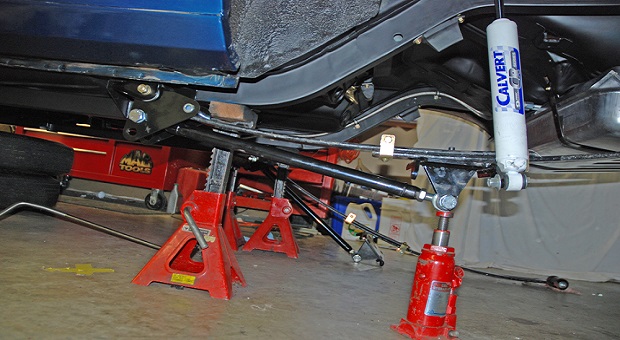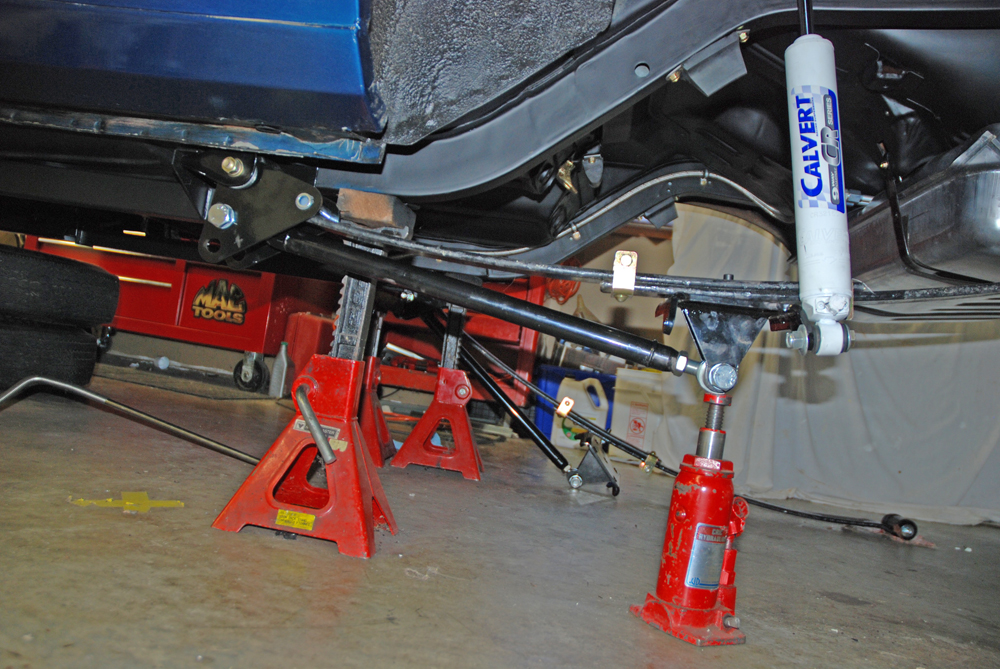
In our last issue, we began our look at hooking hard and going straight with a leaf spring car. In that segment, we examined the unique split mono leaf springs Classic Industries recommended. If you recall (or turn back the electronic pages), those springs are made available in a rather large range of combinations. That means that ride height, vehicle weight, and other characteristics can be taken into consideration. The key here, though, is that the springs are engineered to work with the Cal-Trac bars Classic Industries distributes.
To give you a brief history of the Cal-Trac, they were designed many years ago by John Calvert and close associate, Larry Kieser. Together, they developed a traction bar that would help hook a (limited tire) NHRA Stock Eliminator car under the letter of the rules. In simple terms, it had to bolt on a leaf-spring car and be easily adjusted. What they eventually came up with is a bar that bolts to the front spring eye location and the bottom of the rear axle in place of the stock spring seat.
In operation, the bar changes the “pushing forces” on the car (when compared to a slapper bar). Instead of simply preventing spring wrap-up, the bar is much like the lower half of a four link. According to the experts, it moves the chassis instant center (I/C) ahead, which allows the car to pick up weight in a location closer to the front end and transfer it to the back wheels. In practice, a front pivot design acts around the front spring eye and loads with a down-force on the front portion of the leaf spring. As the rear end rotates, a forward motion is developed which pushes forward on the pivot and forward on the body, not up as is the case with slapper bars. In the end, pinion angle is maintained and the car hooks. What you get is a car with less body separation than a slapper bar, but more weight transfer. The bars offer complete adjustability and can be pre-loaded if necessary (just like a four link).
And just like a sophisticated four link suspension, Cal-Tracs allow for easy adjustment. The bars can be moved for more pre-load and they include a pair of forward mount holes. By moving the force link bar to the lower mount location, the instant center moves further forward. This means that very nose heavy applications can still be made to transfer weight to the rear (and consequently hook). We’ll dig deeper into adjustments down the road.
What’s unique about these bars is the fact that they can supply major traction (of the nose-bleed-wheel-stand configuration) without any added fabrication. That means that you simply bolt them on, and tune the bars for both the track or road surface and the horsepower conditions which exist at the time. In reality, they’re almost like having a four link without the welding hassle. Just as important, it’s entirely possible to run these bars on the street (and many savvy street runners do). See the photos for more information.
In the photos that follow, you’ll get a close up look at the Cal-Tracs bar. These bars are designed to give a leaf spring car colossal hook without serious fabrication. That certainly works for us. And by the way, we’re not quite done yet. Next issue, we’ll look at the shock absorbers Classic Industries recommended for our Nova application. Watch for it.








Leave a Reply